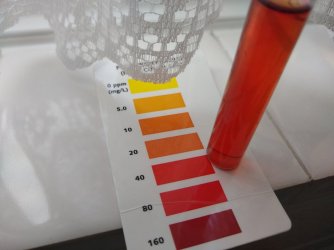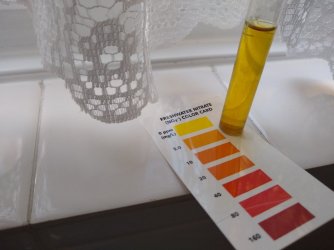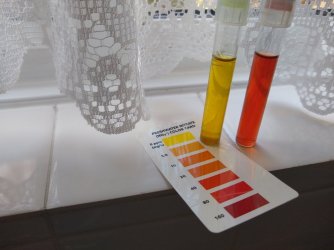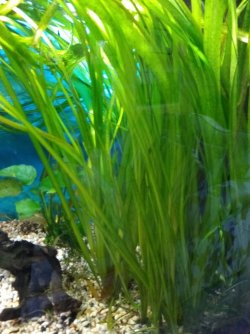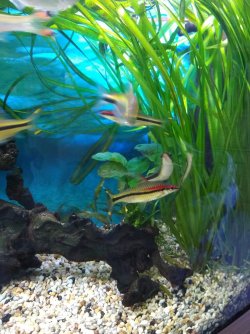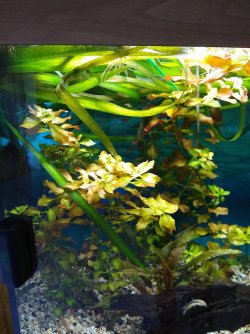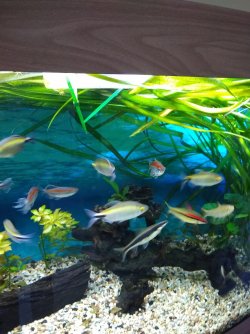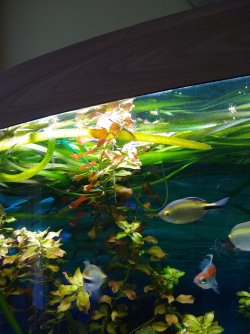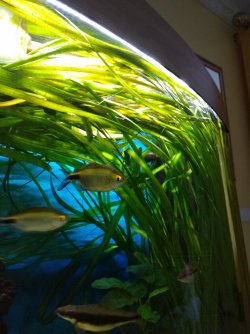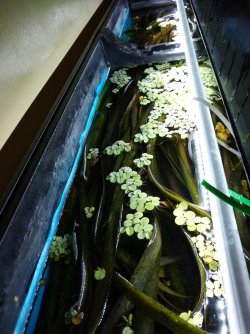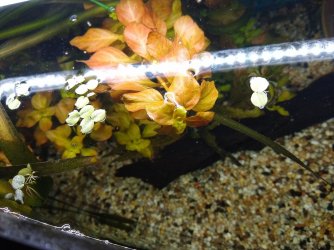AbbeysDad
Fish Gatherer
Nobody likes doing partial water changes... okay some do but we'll talk about those weirdo's later 
Many hobbyists will go on a quest for lower nitrates like a search for the holy grail. As recent post reminded me.
This also reminds me of the zillions of dollars manufacturing plants spend on the latest fads for increased production with higher quality (Quality circles -> the Deming philosophy -> ISO 9000-9001 -> Six Sigma...) But I digress.
With nitrates in my well water, I too endured a period of what I've called My Nitrate Fight.
I tried low flow filters with commercial bio-media that promised 'micro pores' like live rock to allow culturing of anoxic/anaerobic bacteria to process nitrate into harmless nitrogen gas. I've done deep sand and my most recent attempt was Dr. Kevin Novak's Anoxic Biocenosis Clarification Baskets.
In the end, most fresh water aquariums simply are too highly oxygenated to provide the proper environment for anoxic/anaerobic cultures large enough to provide a serious reduction in nitrates. The time honored methods of Lowering Aquarium Nitrates still hold true.
Oh from time to time we'll hear stories about tanks that get few, if any, water changes with zero nitrates. I can't say these are 'fish tales' but sometimes I question the test results. Or maybe there are very few fish in a heavily planted tank. Or maybe there's some other special case, but these tales are exceptions rather than the rule.
I invite you for a deep dive into Filtration and Water Quality.

Many hobbyists will go on a quest for lower nitrates like a search for the holy grail. As recent post reminded me.
This also reminds me of the zillions of dollars manufacturing plants spend on the latest fads for increased production with higher quality (Quality circles -> the Deming philosophy -> ISO 9000-9001 -> Six Sigma...) But I digress.
With nitrates in my well water, I too endured a period of what I've called My Nitrate Fight.
I tried low flow filters with commercial bio-media that promised 'micro pores' like live rock to allow culturing of anoxic/anaerobic bacteria to process nitrate into harmless nitrogen gas. I've done deep sand and my most recent attempt was Dr. Kevin Novak's Anoxic Biocenosis Clarification Baskets.
In the end, most fresh water aquariums simply are too highly oxygenated to provide the proper environment for anoxic/anaerobic cultures large enough to provide a serious reduction in nitrates. The time honored methods of Lowering Aquarium Nitrates still hold true.
Oh from time to time we'll hear stories about tanks that get few, if any, water changes with zero nitrates. I can't say these are 'fish tales' but sometimes I question the test results. Or maybe there are very few fish in a heavily planted tank. Or maybe there's some other special case, but these tales are exceptions rather than the rule.
I invite you for a deep dive into Filtration and Water Quality.

